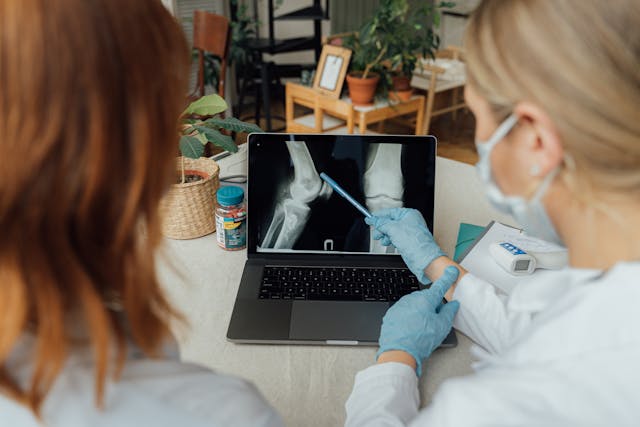Joint pain can stem from everyday wear and tear, injury, or underlying medical conditions. While occasional discomfort is normal, persistent or severe joint pain may signal the need to consult an orthopedics specialist. Seeking professional care helps patients effectively address joint pain, improving mobility and overall quality of life.
Seeking Care for Persistent or Worsening Pain
It is not uncommon to experience mild joint discomfort after physical activity or weight-bearing tasks. This pain often resolves with rest, ice, or over-the-counter pain relievers. If joint pain persists for several weeks or intensifies over time, it may indicate a more serious orthopedics related issue. Conditions like arthritis, tendinitis, or sports injuries can cause ongoing discomfort. Persistent pain that does not improve with self-care measures warrants evaluation by an orthopedic specialist. A thorough assessment helps specialists develop an appropriate treatment plan.
Addressing Limited Mobility in Joints
Joint pain that significantly limits range of motion or daily activities can point to underlying structural issues. Difficulty bending, extending, or rotating a joint can interfere with simple movements like walking up stairs or reaching overhead. Such limitations may indicate joint degeneration, cartilage damage, or ligament injuries. An orthopedic specialist will conduct diagnostic tests and recommend treatments to restore function and improve joint mobility.
Recognizing Symptoms of Joint Instability
Joint instability can manifest as a sensation of the joint “giving out” during movement, making daily activities or athletic performance challenging. This instability may accompany swelling, weakness, or pain, which can limit range of motion and impact overall joint function. Athletes, in particular, who experience instability in key joints like the knees, shoulders, or ankles are at a higher risk of ligament tears, sprains, or even chronic joint issues if left untreated.
Prompt evaluation by an orthopedic specialist is key to identifying the underlying cause of instability and to determine the best course of action, whether that includes physical therapy to strengthen the joint, bracing for added support, or surgery in more severe cases. Addressing instability early not only minimizes further joint damage but also helps restore function, prevent long-term complications, and allow individuals to return to their normal activities or sports with confidence.
Identifying Signs of Joint Swelling and Deformity
Swelling, redness, or visible changes around a joint often indicate inflammation, trauma, or fluid accumulation. Some individuals may notice deformities, such as a visibly misaligned joint or joint enlargement. These symptoms may result from conditions like rheumatoid arthritis, gout, or fractures. Orthopedic specialists have access to advanced imaging technologies, like MRIs and X-rays, to accurately diagnose and manage these issues. Early diagnosis can help reduce discomfort and prevent complications.
Managing Joint Pain with Orthopedics
Recognizing when to see an orthopedics specialist is a key step in managing joint pain effectively. Whether caused by an underlying condition or an injury, advanced orthopedic care can help individuals better understand and treat joint discomfort. If you experience persistent pain, limited mobility, instability, or swelling, it might be helpful to scheduling a consultation with a specialist. Seeking timely treatment may help improve joint health and minimize future complications.

